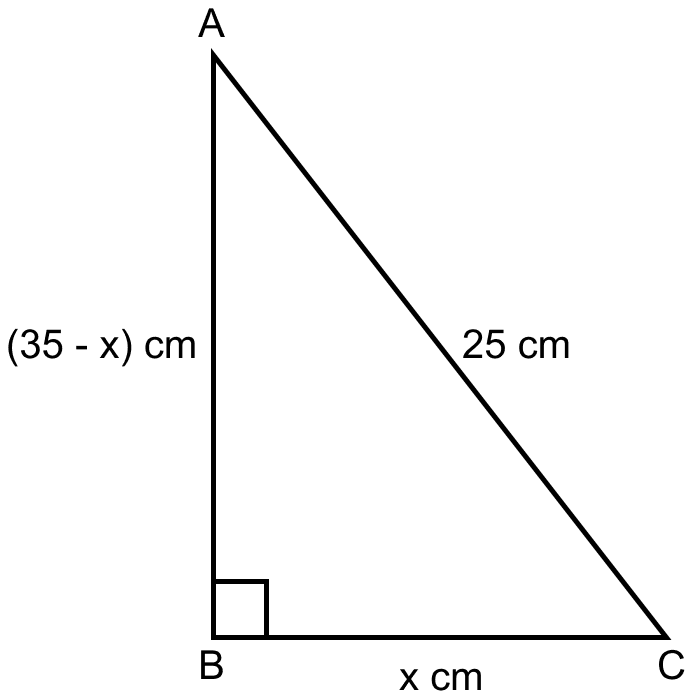Mathematics
If the perimeter of a right angled triangle is 60 cm and its hypotenuse is 25 cm, find its area.
Mensuration
61 Likes
Answer
Let △ABC be the right angle triangle.

We know that,
Perimeter of a right-angled triangle = 60 cm
Hypotenuse = 25 cm
So, the sum of other two sides of triangle = 60 – 25 = 35 cm
Let base (BC) = x cm
So, AB = (35 - x) cm
Using the Pythagoras theorem,
⇒ AC2 = AB2 + BC2
⇒ 252 = (35 - x)2 + x2
⇒ 625 = 1225 + x2 - 70x + x2
⇒ 2x2 - 70x + 600 = 0
Dividing by 2 on both sides,
⇒ x2 - 35x + 300 = 0
⇒ x2 - 15x - 20x + 300 = 0
⇒ x(x – 15) - 20(x - 15) = 0
⇒ (x - 15)(x - 20) = 0
⇒ x - 15 = 0 or x - 20 = 0
⇒ x = 15 or x = 20.
If x = 15, then 35 - x = 35 - 15 = 20 cm.
If x = 20, then 35 - x = 35 - 20 = 15 cm.
So, length of other two sides apart from hypotenuse are 15 cm and 20 cm.
Area = × base × height
Substituting the values we get,
A = × 15 × 20 = 150 cm2.
Hence, area of triangle = 150 cm2.
Answered By
26 Likes
Related Questions
The sides of a right-angled triangle containing the right angle are 5x cm and (3x – 1) cm. Calculate the length of the hypotenuse of the triangle if its area is 60 cm2.
In △ABC, ∠B = 90°, AB = (2x + 1) cm and BC = (x + 1) cm. If the area of the △ABC is 60 cm2, find its perimeter.
The perimeter of an isosceles triangle is 40 cm. The base is two third of the sum of equal sides. Find the length of each side.
If the area of an isosceles triangle is 60 cm2 and the length of each of its equal sides is 13 cm, find its base.